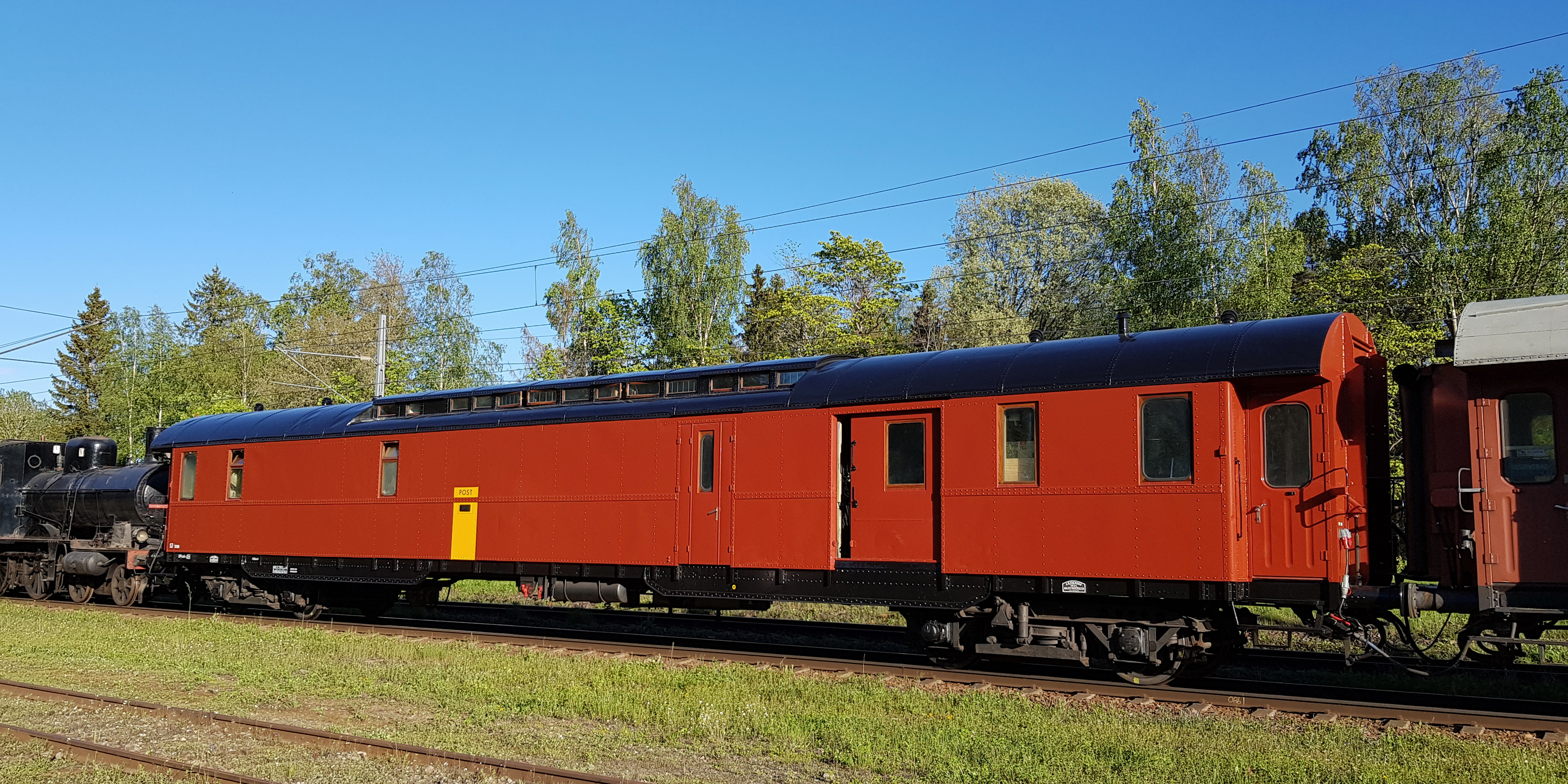
The wagon transported post and baggage, but it was also staffed for mail sorting. The sorting compartments were located along the long sides and a lantern was built in the roof to allow light in.
The wagon was called DFo6 when it was new, DFo16 in 1948, DFo25b in 1963, and DF25 in 1970. We have chosen for its appearance to be as close as possible to what it had in 1963, but one of the large baggage doors on the side of the wagon was closed off when it was converted to an auxiliary wagon in 1974.
In 1974, it was taken out of service and converted into auxiliary wagon Qgh 986 0027. It was then parked in Ånge, where it was at the ready to respond to train accidents. After use of auxiliary wagons was discontinued, it came to the Ostkustbanans Vänner association in 2000, where it served as a companion wagon in their extra train. The Swedish Railway Museum took over in 2016 and it was completely refurbished.
The carriage now contains a kitchenette and a small office for the train crew, changing rooms, a shower, a toilet with a tank, a cleaning cupboard, a storage room, a workshop and a power station. The power station is used to supply the restaurant carriage and the bar carriage with 400 V, 50 Hz.
Explanation
DFo25b is a type designation (class), where:
- D indicates it is for post and F that it is for baggage.
- 25 indicates that the floor space in the postal areas is 25 square metres
- b was added to distinguish this wagon from a wagon type that came from the East Coast Line (Ostkustbanan) and was also called DFo25
- 3096 is the carriage’s unique identifier number
Manufactured
AB Svenska Maskinverken in Södertälje, 1935
Length
23.9 metres
Weight
53.2 tonnes, making it our heaviest passenger carriage
Maximum permitted speed
130 km/h